A visit to the biggest aquarium in Latin America: Acuario Inbursa in Mexico City
One of my favourite things about long weekends is that you can visit Mexico City and find it pretty much empty in comparison to other times of year. In Mexico, we call them "long weekends" when there is a national public holiday and you don't have to work. If the public holiday falls on a Thursday, people generally request to not come to work on Friday either, meaning that they can take advantage of the time to travel or to visit family from the Wednesday night until Sunday. For obvious reasons,... (which is what we call the people who live in Mexico City) take advantage of being able to leave the city for others close by like Cuernavaca, where many people buy holiday homes, or they decide to go to the beach to celebrate the national holidays.
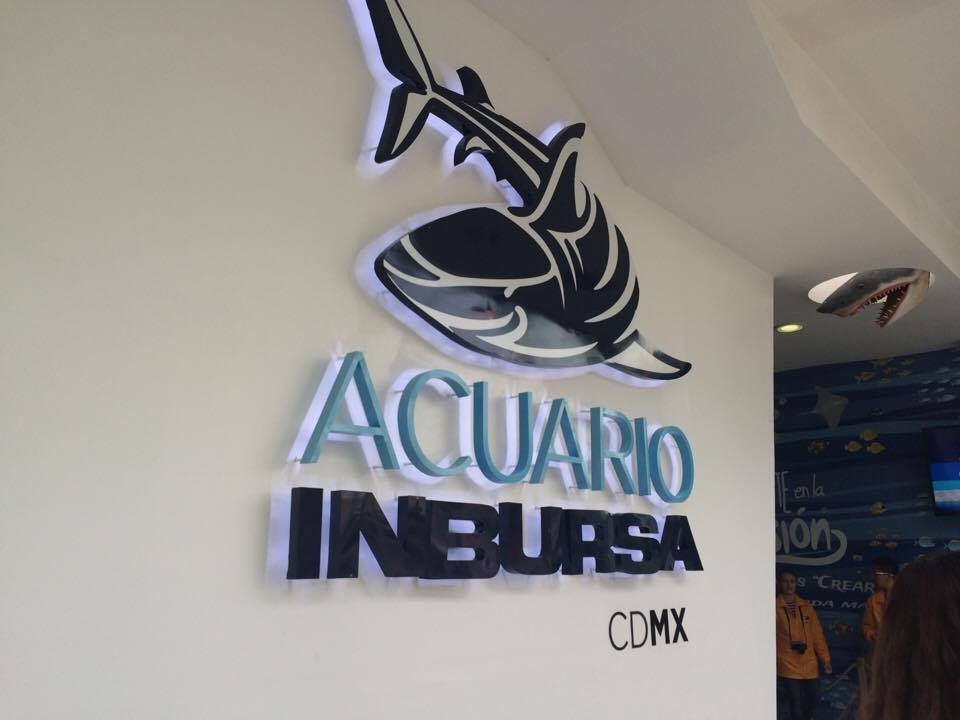
Entrance to Acuario Inbursa in Mexico City.
We live in Querétaro and we took advantage of the long weekend to come and visit Mexico City, given that it's not as chaotic as it normally as during these periods. One of my young nieces wanted to go to Acuario Inbursa, which is located in the Polanco neighbourhood. This aquarium is one of the newest in the city and one of the "most modern", so it's for this reason why there is usually quite a sizeable queue to be able to visit it. We arrived early and it took us half an hour to enter; however, when we left Acuario Inbursa, the queue was three times bigger than normal, with a wait time of approximately one hour. Walking the length and breadth of the aquarium takes approximately 40 minutes to an hour, that is if you don't stop for something to eat.
I have to admit that it was difficult to be impressed by this particular aquarium, as I recently did an exchange in Spain and had the opportunity to go to L'Oceanografic in Valencia, which is both the biggest aquarium in Europe and one of the most important in the world. In comparison with the latter, Acuario Inbursa didn't impress me so much, but, I will admit that it is much more educational and allows for audience interaction with the marine world - something that I didn't see at L'Oceanografic.
History of Acuario Inbursa
This aquarium opened its doors very recently, in the summer of 2014. It's located in a very strategic area, within the so-called Plaza Carso. In front of the aquarium, you will find the Museo Soumaya, Museo Jumex, and Teatro Telcel, so, if you are visiting the city, you will find yourself in a really handy place to see all the sights in Mexico City.

In this photo, you can see the Museo Soumaya, which is situated just in front of Acuario Inbursa. Visiting this museum is an excellent option after going to the aquarium; its original architecture has lead to the designer winning quite a few awards.
One of the motives for visiting the aquarium is the fact that I always passed through the area and I had never seen it. On the other hand, I have been told that it is the largest aquarium in Latin America thus far. What also caught my attention was knowing that it's not an open-air aquarium, but actually an underground building, so, when you arrive, you have to descend three floors in a lift in order to start this marine experience.
Until now, we didn't have a well cared for aquarium in Mexico, and the construction of this one was well-documented in the news thanks to the investment of 250 million Mexican pesos, which would work out at around $13, 061, 505, to give you a rough idea of the vast amount. For its construction and conversation of species, 22 million litres of sea water was brought from Veracruz, or the Gulf of Mexico, so, it's for this reason that when it opened, the population was abuzz with excitement. The aquarium houses more or less 8000 species that are distributed among 48 different exhibitions, in an area of 3600 square metres.
Protection of marine species by CECONSE (El Centro de Conservación)
This aquarium heads a project known as CECONSE, a project of care for and conservation of marine life: its inspiration in having been brought to life was the deterioration of the marine ecosystems in Mexico and the need for us to react and be socially aware of the actions that we can take to avoid its deterioration. The specialists working for CECONSE take care of the diets and analysis of each species, as well as caring for their quarantine and the supervision of very delicate species' reproduction, like seahorses, sharks, jellyfish and manta rays.
In the aquarium, you will be able to find more than 230 species brought from tropical evergreens to the deepest parts of the ocean. You will be able to find different species of sharks and manta rays, as well as those of the main characters from the film, Finding Nemo. Yes! You will be able to find Marlin, Nemo, Dory, Mr. Ray, Bubbles, Crush, and even penguins! In fact, there is lots of advertising for the film throughout the aquarium, especially as the film, Finding Dory, was very recently released.
Amongst other species that you will be able to find, there are: lobsters, starfish, turtles, clams, jellyfish, poisonous frogs, snakes, and even a crocodile. You must bear in mind that the route around the aquarium starts underground and finishes at street level, so the first stop will be on -3 to finish on the ground floor; there will be four floors of entertainment and learning.
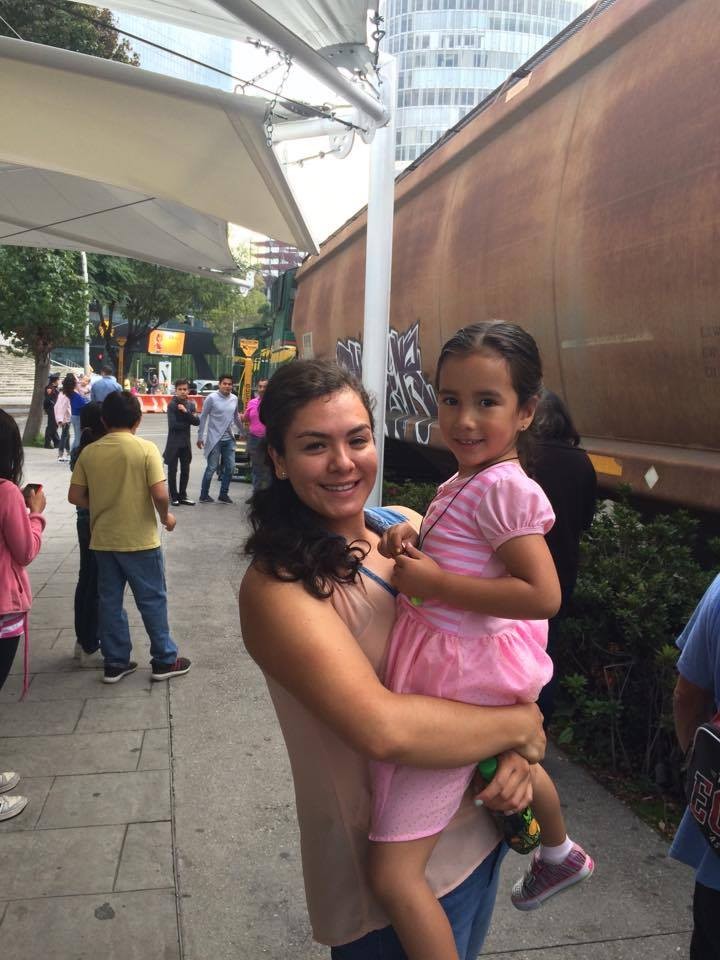
If you are as lucky as us, whilst you wait in the queue to get into the aquarium, you will see one of the oldest and most unique trains pass you by as it travels through Mexico City. The only user of this train in this area is the flour manufacture, Harinas Elizondo, so it's rare to actually see it pass by.

The train up close.
How much does entry cost?
Entry to the aquarium costs $195 Mexican pesos per person, which would be approximately $10. 26. Children under the age of 3 go free, and the only discount currently available is for people with disabilities or people over 60 upon presentation of a INAPAM card; with this, entrance would cost $175 Mexican pesos, which would work out at roughly $9. 21.
What are the aquarium's opening hours?
Acuario Inbursa is open Monday to Sunday, from 10am to 6pm. However, I would recommend arriving at 9:30am because you will find people already queuing to get in (mainly at weekends), and when it opens, you will be one of the first to enter, and therefore will be able to look at all the species at your own pace without the craziness of the commotion of people.
Where is the aquarium located?
The aquarium is located in the Polanco neighbourhood, a relatively safe area of the city. You can get there either by car or by public transport. If you take the city's metro system, I recommend that you take Line 7 (orange line) and alighting at either San Joaquín or at Polanco.
Let's start our visit!
The visit starts on Floor 0, where both the aquarium's entrance and ticket offices are located. It will all kick off with a photo of your family, where they take your photo in front of a green screen, making you pretend that you have seen a terrifying shark, as well as a normal, smiling one. They will give you a ticket so that, at the end of your visit, you can exchange it for the photograph that you have liked the most and buy it if you so wish - they are pretty cool, to be honest. If you want to go to the toilet, this is the time to do so, as the only bathroom is located on this floor; if you want to go later, you will have to come back up via the lifts, which, ultimately, takes some time.
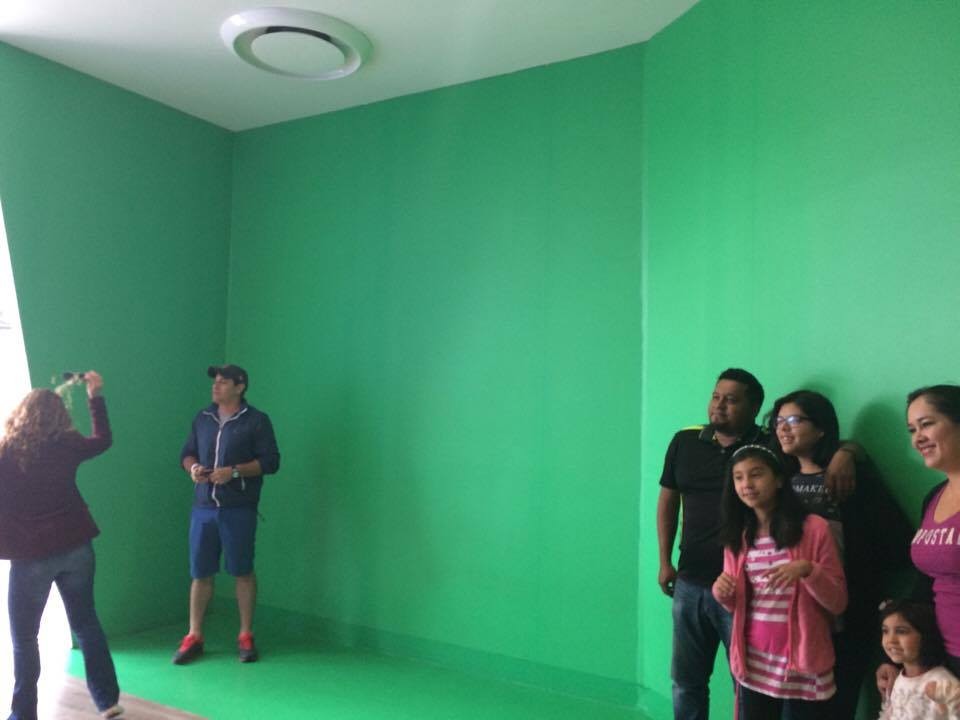
With the help of Photoshop, this green screen can "remove" the outline of the image of your family and place it over a marine background on the computer that you can buy at the end of your visit.
Third floor: ocean floor

Behind a 10 metre tall glass screen, you will find beautiful marine creatures.
We start our visit on the bottom floor, where the species that are found in the deepest part of the sea are located. This exhibition is known as "Barco Hundido" ('Sunken Ship', in English), and you will be able to find some of the more than 440 species of sharks that exist in the world, including the Sandbar shark and the Blacktip reef shark.
In addition to these, you will also be able to find several schools of fish swimming in a coordinated manner around each other. On this floor, you will be able to see the tank from different angles: at the start, you will see it vertically, but later, you will walk through the corridor and you will be surrounded by glass from floor to ceiling, where you can see the species swimming over your head.

A beautiful and captivating shot of a shark and its offspring, which was always swimming above it.
Another of my favourite things about the aquarium was entering the corridor where you can see and are surrounded by the enormous floor to ceiling fish tank. In this section, you will be able to find yourself surrounded by the same sharks, manta rays and schools of fish that you saw earlier, but here you will see them in a different way. This is an excellent representation of the sea floor, as they have brought sea coral to imitate the ecosystems without affecting their aquatic life nor their vegetative one.

The glass ceilings enabled me to take this photo with a ray, who decided to pose for the camera by smiling a little.
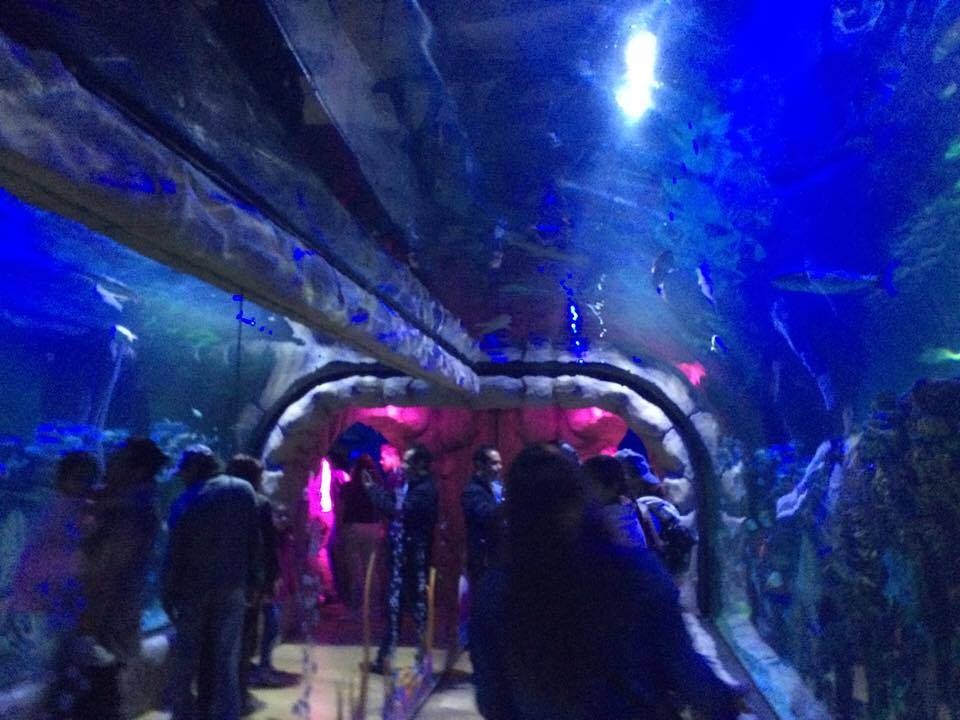
An incredible corridor that allows you to see the coral.
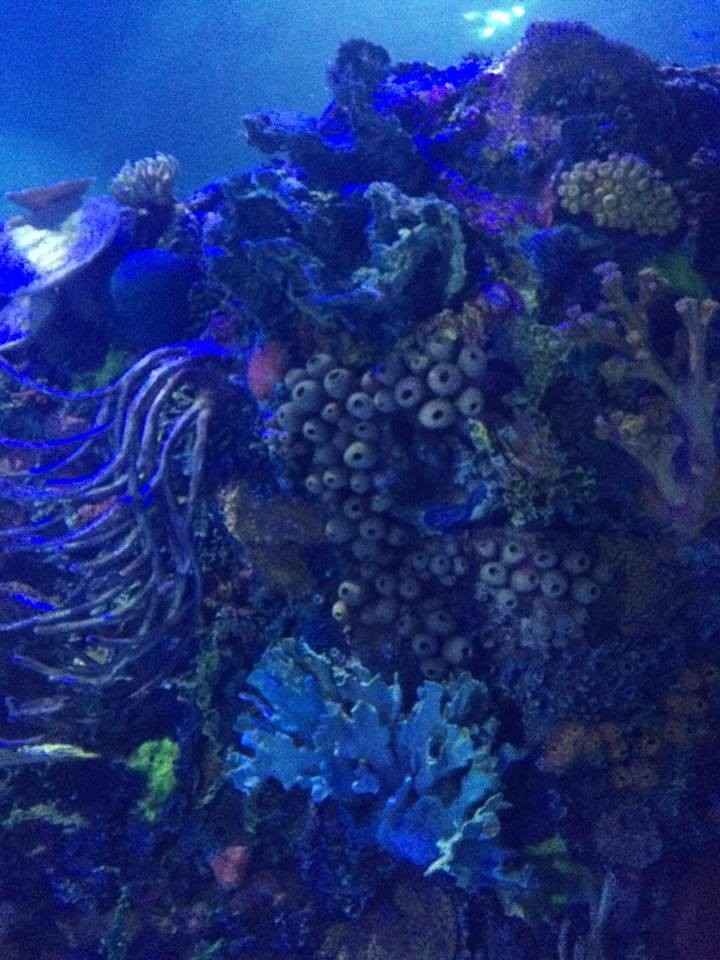
Coral and more coral...
Second floor: Bosque de Kelp (Baja California, Mexico)
This was my favourite floor because it was one of the most educational and one of the few where the explanations about the ecosystems presented were really clearly. One of the captivating species on display are the jellyfish. As soon as you enter into this exhibition, you can see a wall that explains their anatomy.

The jellyfish are separated into different, smaller tanks, so you can see them all and how their colour changes with the light that is shined onto them.
Due to the fact that jellyfish don't have blood, organs or a brain, their body composition is almost 95% water, it makes it difficult for us to see them just with our eyes. Therefore, the aquarium has installed special lights so that you can see them in spite of their transparency. This section is known as the "Laberinto de medusas" ('Jellyfish Labyrinth', in English), originating from the Atlantic: you will see different types of jellyfish in order to understand what their defence system is like and what to do in case one stings you.
After this section, you will be able to see the only coral reef living within the aquarium: this reef is home to clownfish and surgeonfish. The reef was brought from the Gulf Sea because it is essential for the survival of some species; the Great Barrier Reef is more than 2000 kilometres long. For fans of Finding Nemo or Finding Dory, this will be your favourite floor of the aquarium, as you will find almost all of the characters (well, their respective species) here.
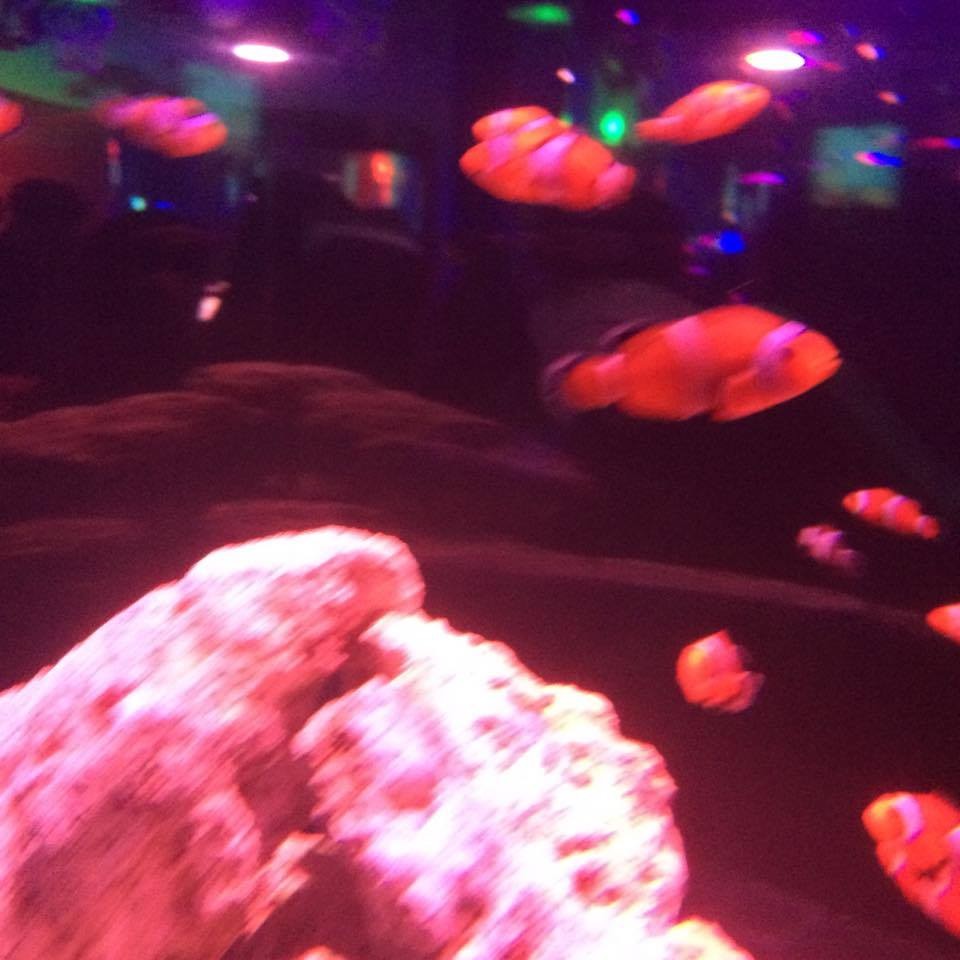
The clownfish are really active, so you will be able to see many "Nemos" moving quickly around the tank.
On this floor, you will also be able to see a recreation of a kelp forest: a coastal ecosystem in Baja California that, for the most part, is formed of brownish-grey algae.
Of course, the most educational part of this floor is "La laguna de rayas" ('Ray Lagoon', in English), where you will be able to see the Bat Ray, amongst other species. It's important to know that manta rays and rays are not the same, as rays tend to be much smaller. In this tank, you can see them with your own eyes from a distance of just half a metre without glass restricting your vision. In the same tank, you will also be able to find yourself with different species of smaller, less dangerous sharks, like the Guitarfish, coming from Calypso Beach. You will also be able to see little starfish and "sea spiders" that look like a ball of thorns.

In this photo, you can see a small shark and a ray living together in the same tank. They defend themselves with their tips.
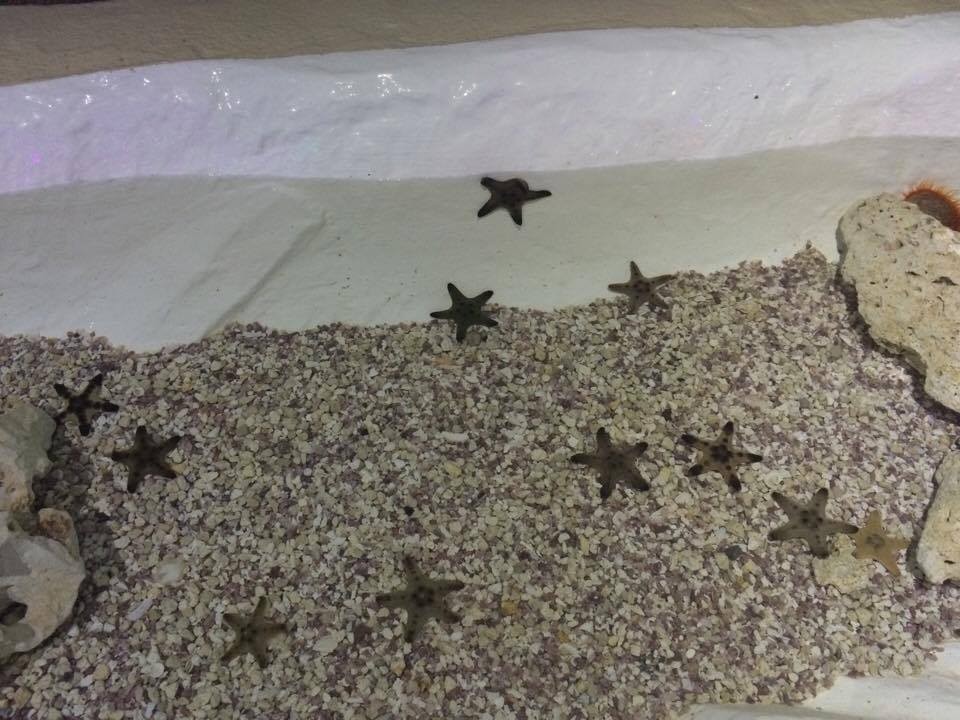
The beautiful starfish.
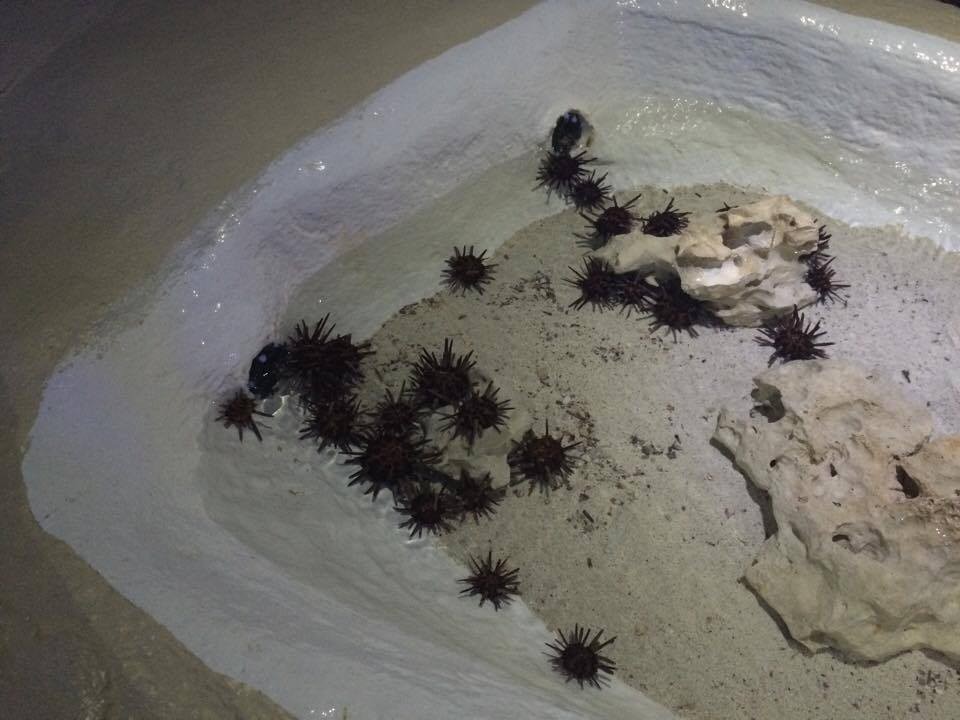
The sea spiders. In each of these sections, there will always be a member of staff willing to help you and explain the marine life of each of these creatures to you.
First floor: beach and tropical evergreens
This floor is for nothing more than to give yourself a little break and take some photos. On this floor, you will find a recreation of a beach and, in a tank, you will meet "mermaids", who will warmly greet the little ones, with the girls being the most excited, of course.
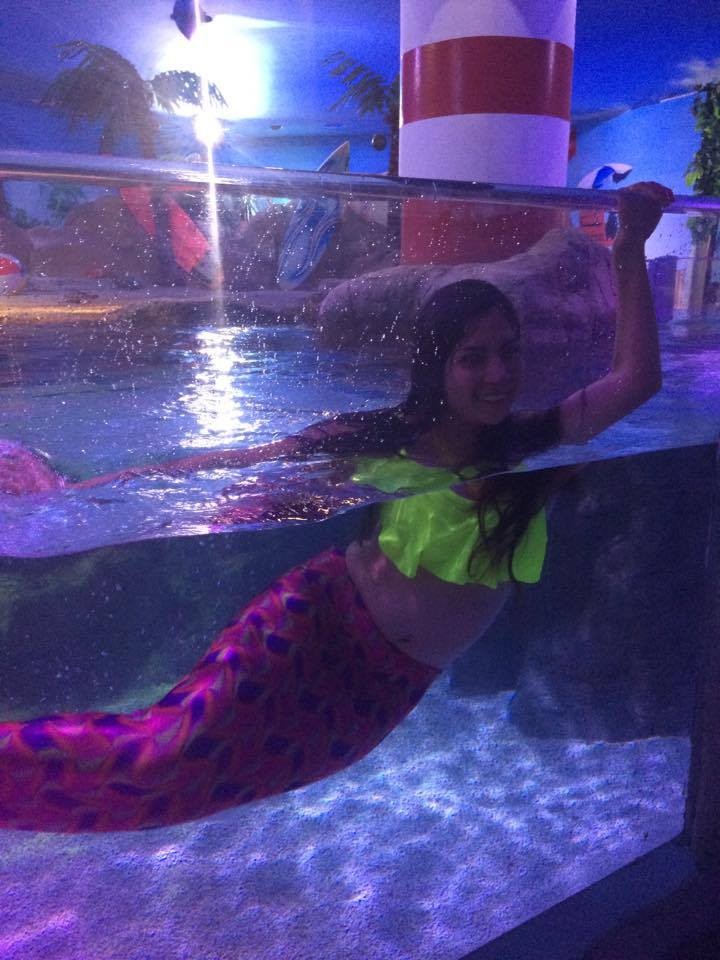
One of the "mermaids".
If you are feeling hungry, you will also be able to buy a snack, or, if you are thirsty, a drink. I must stress, however, that I took a few small cakes in my bag, which was not checked by anyone at any moment... So, it's possible to enter the aquarium with some water or a cereal bar in your bag without anyone confiscating it from you.

Although the shop is small, it can be of great use to you if you are hungry or thirsty: just remember to respect the marine creatures and don't give them food for any reason.
A little later, you will be able to enter a recreation of the Mexican evergreens in the "Manglar Negro" exhibition, where you will find national species like the Mexican salamander, described in a story by Cortázar.
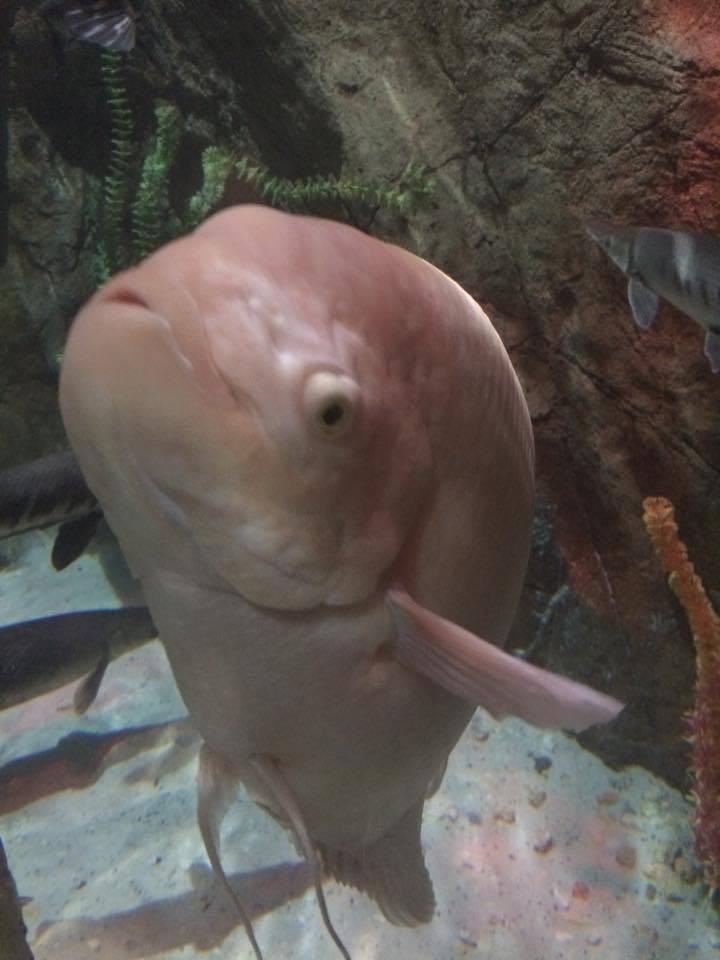
A fresh water fish. I took a photo of it and it posed for me in quite a funny way.
The evergreens area was also one of my favourites, as it excellently represents the species that come from the Amazon. Without a doubt, I loved seeing lots of florescent green, yellow and pink fish, which is thanks to genetic engineering with a florescent green protein ("GFP") that makes their children inherit these features. As this is something that we study as part of my degree, it was really great for me to have finally seen it in action.
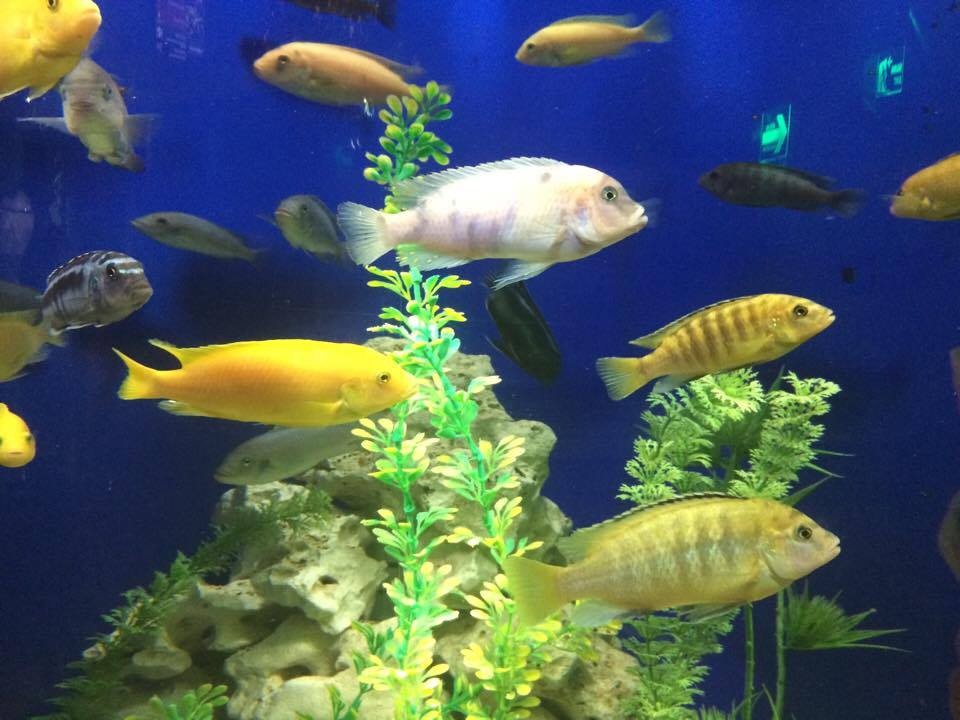
More little fresh water fish.
You won't only find fresh water fish that are quite different to those from the sea, but also other species like crocodiles and others that are not 100% aquatic in nature, like brightly-coloured frogs found in the rainforest. However, you have to be very careful with these because they are quite poisonous. These species are known as poison dart frogs (both blue and yellow). You will also be able to find leopard geckos, coral snakes, rattlesnakes and African spurred tortoises; the latter are found in the desert and live up to 100 years. Remember that the taking of photos is permitted at all times during the visit, provided that you don't use flash.
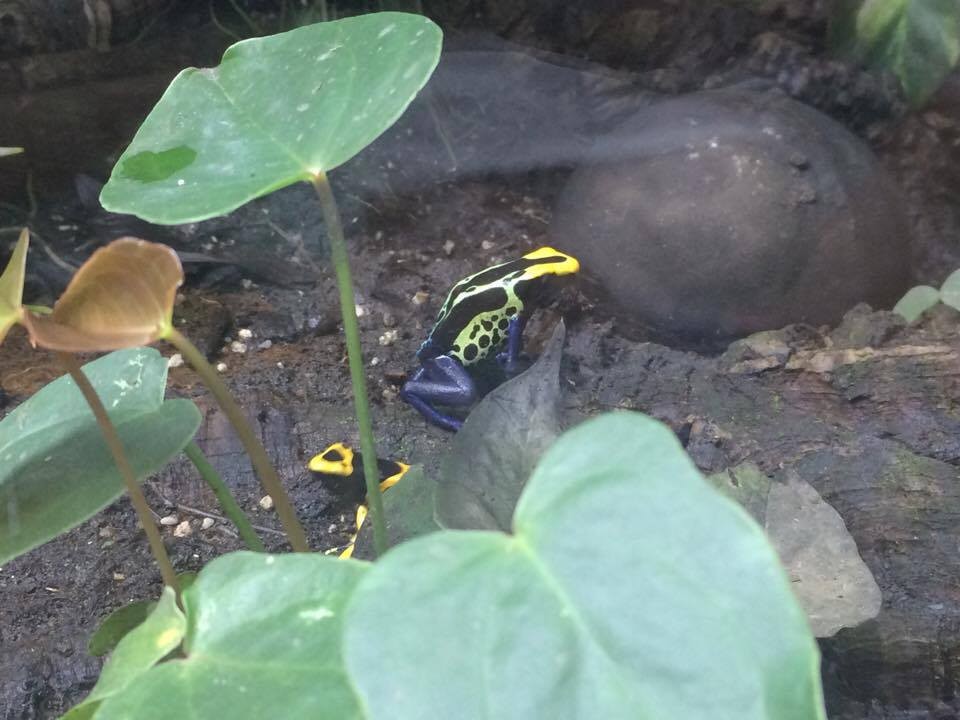
The shinier and more colourful they appear to be, the more poisonous they are...
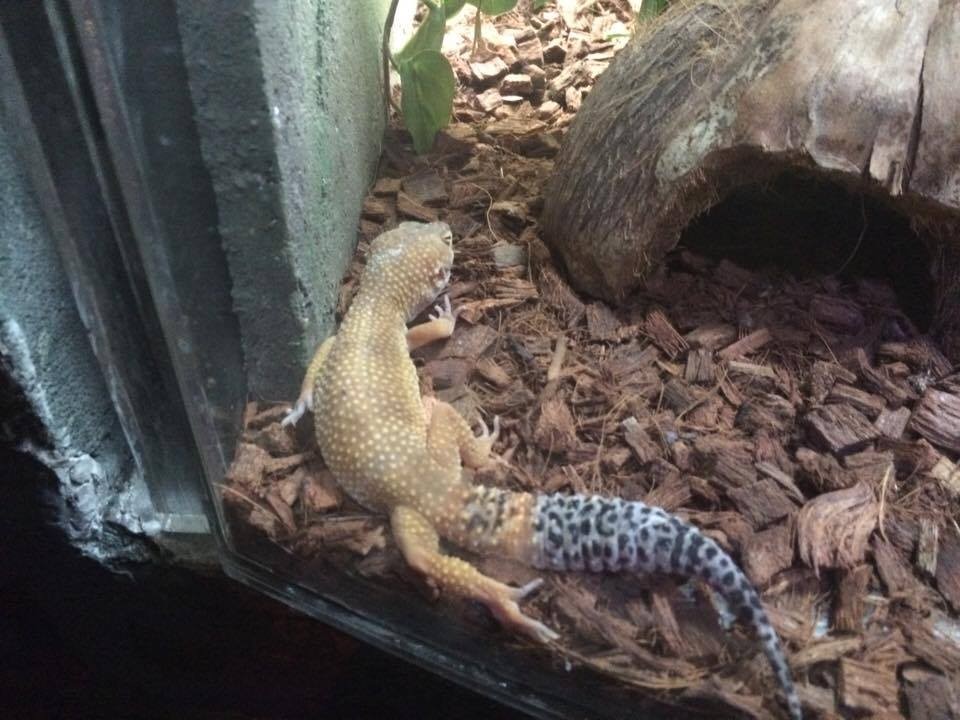
A gecko.
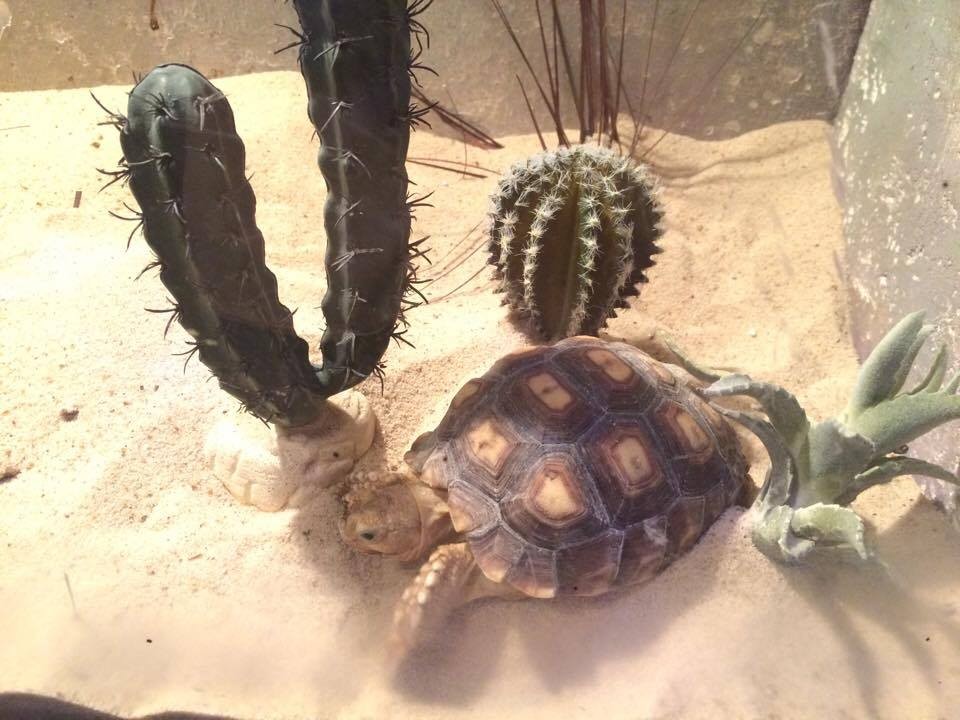
Here is a photo of the desert turtles that live for more than 100 years...
Lower ground: Penguinarium in the evergreens of Antarctica
Finally, we come to the "coldest" area of them all, and to the one that will end our visit at the aquarium: the evergreens of Antarctica. Here, you will be able to find tiny Gentoo penguins that live in the Antarctica under very extreme climatic conditions. Personally, I don't really like seeing them because they live in quite a confined space, although at least they have looked to recreate their natural habitat and the ways that they swim - all hidden behind a glass screen. In this area, you will also be able to take lots of photos with replicas of bigger penguins.
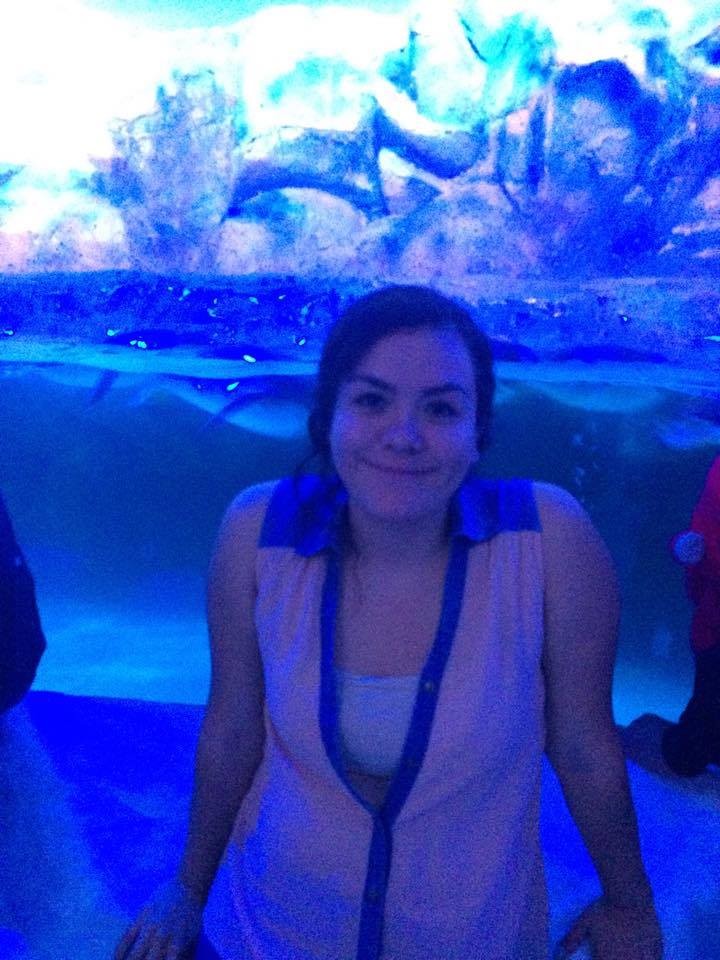
Maybe you can't see it so well, but, behind me, there are some penguins swimming.
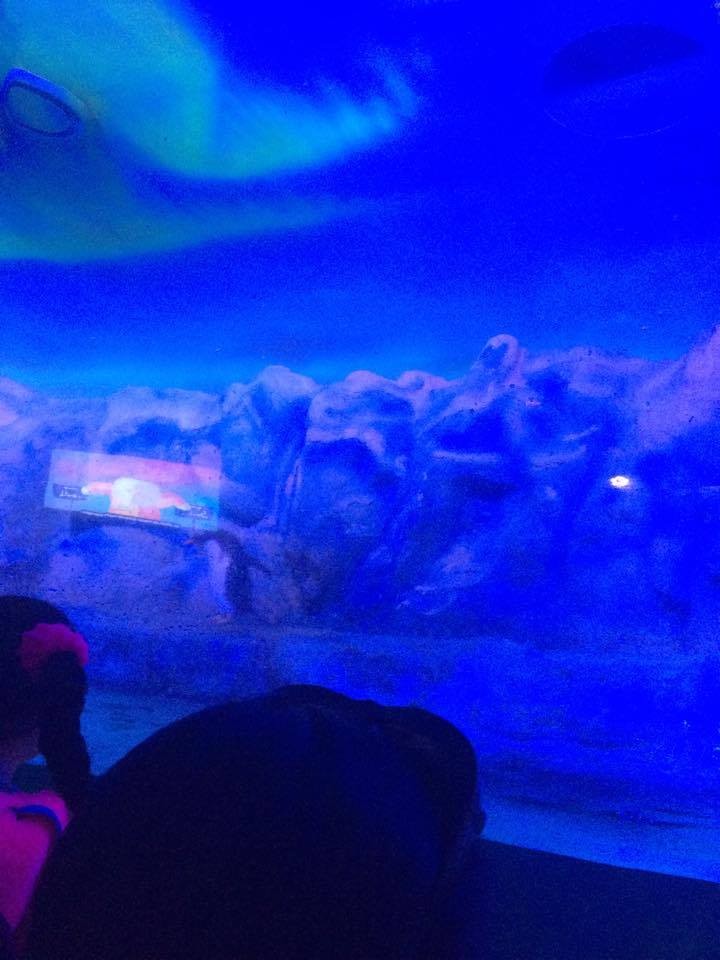
This type of light doesn't allow for the best quality photos, but here you can see a penguin readying itself to dive into the water.
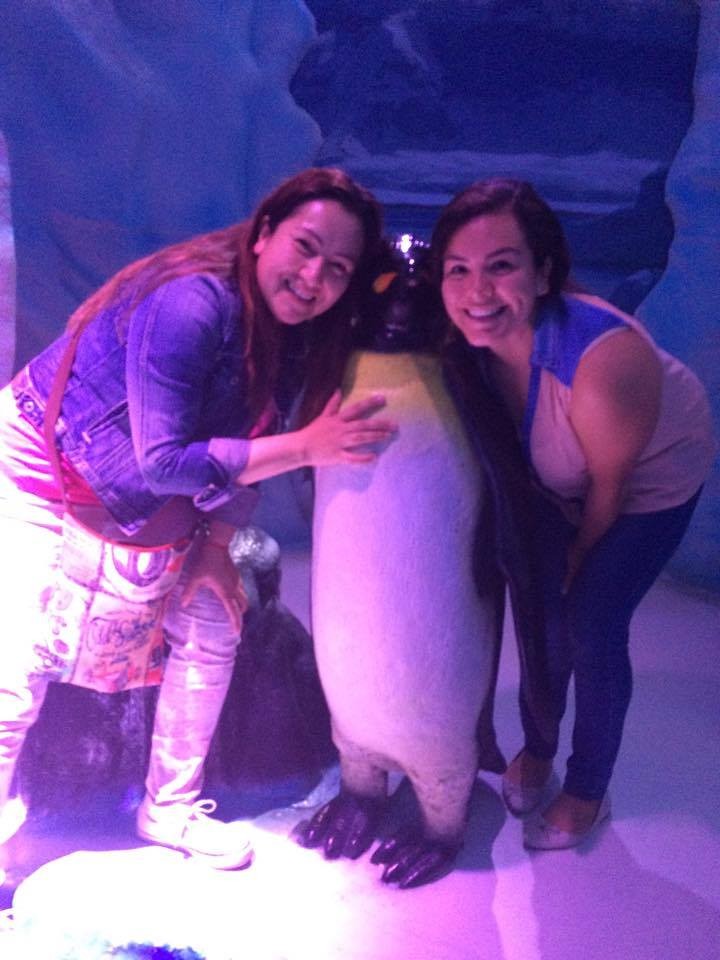
Don't miss out on the opportunity to take a photo with one of these penguins.
Don't forget your photo and souvenir!
If anything, I realised that lots of foreigners visit the aquarium, especially people from Latin America. In the gift shop, you will be able to buy mugs, Thermos, umbrellas, and stuffed animals of the different species that you saw there. The designs on the Thermos are really cool, and there is a huge variety of teddies to choose from: the most original ones are the jellyfish ones; I've never seen them in any other place.

Here, you will able to get your photo and souvenir stuffed animal.

The gift shop and the queue to collect your photograph.
If you haven't lost the ticket that they gave you at the start of the visit, it's important to get it out so that you can see what the photo you took earlier is like and to decide if you want to buy a copy. They can put you over different backgrounds, but a single photo costs $100 Mexican pesos (roughly around $5. 21), which seems quite expensive to me for just one photo... so, for this reason, we didn't buy them.
Photo gallery
Content available in other languages
- Español: Una visita al acuario más grande de Latinoamérica: Acuario Inbursa en la Ciudad de México
- Italiano: Una visita all'acquario più grande dell'America Latina: Acuario Inbursa (Città del Messico)
- Français: Visite de l'aquarium le plus grand d'Amérique Latine : l'aquarium Inbursa dans la ville de México
- Português: Uma visita ao maior aquário da América Latina: Aquário Inbursa na cidade do México!
Rate and comment about this place!
Do you know Acuario Inbursa? Share your opinion about this place.










































